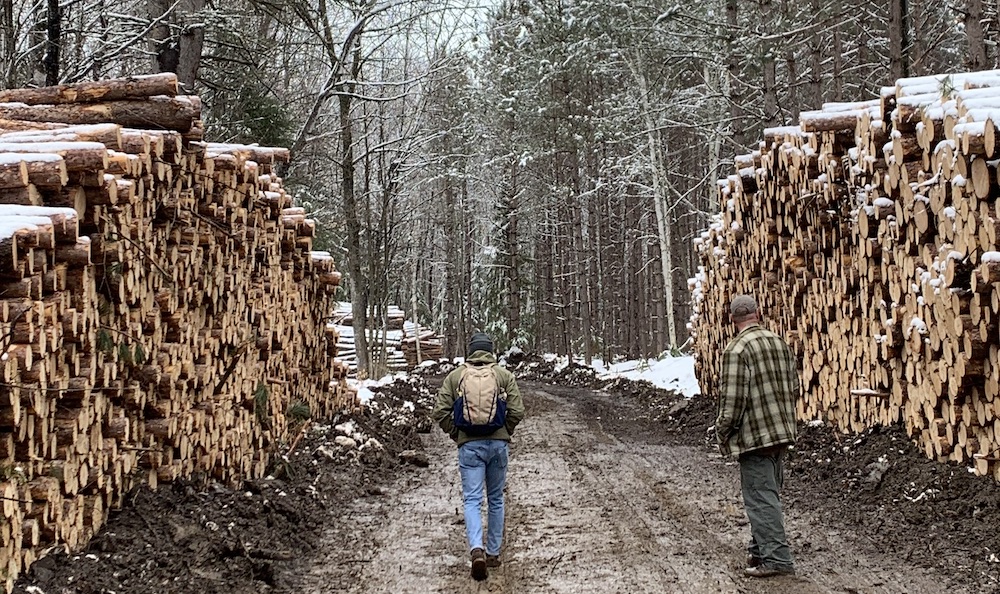
- Details
- By Chez Oxendine
- Energy | Environment
After two years of steady growth, the United States Department of Agriculture significantly increased its efforts around tribal forest co-stewardship over the past year.
The USDA signed 120 new forest co-stewardship agreements with tribes throughout fiscal 2023 and more than tripled its co-stewardship investments to $68 million, according to a statement released during the White House Tribal Nations Summit earlier this month.
The progress reflects an agency-wide effort to reshape its programs to incorporate more tribal and Indigenous perspectives, remove barriers, and encourage self-determination, according to Tom Vilsack, secretary of the USDA.
“USDA is working directly with Tribal Nations to support their decisions on how best to co-steward federal lands and forests and the traditions that have been passed down from ancestors and elders,” Vilsack said in the statement.
“Tribal sovereignty is crucial,” USDA’s Office of Tribal Relations Director Heather Dawn Thompson told Tribal Business News. “The White House has made very clear that tribal sovereignty is a priority of this administration, and that direction goes down to our department, and you can see that echoed in our work.”
Notable new relationships announced throughout the year include a memorandum of understanding between the Central Council of Tlingit and Haida in Alaska and the US Forestry Service, which establishes co-stewardship of the Mendenhall Glacier Recreation Area’s federal lands and resources, and a similar relationship between the Forest Service and several Minnesota tribes, such as the Bois Forte Band of Chippewa, the Fond du Lac Band of Lake Superior Chippewa, and the Grand Portage Band of Lake Superior Chippewa.
In a prepared statement, Tlingit and Haida Council President Richard Chalyee Éesh Peterson said the co-management arrangement would enable the tribe to have more say in control and development of their traditional homelands.
“We have historic knowledge that should be used and shared when it comes to creating future plans for the Mendenhall Glacier Recreation Area. These lands tie us to our ancestors. They help us understand where we come from, who we are and how to live,” he said. “We are dedicated to the preservation and protection of the historic and cultural resources in the area.”
This marks year two of President Joe Biden’s Tribal Homelands Initiative, a joint venture between the USDA and the Department of the Interior to improve relationships between federal agencies handling lands bordering or within tribal reservations and traditional homelands.
These co-management agreements stem from Joint Secretarial Order (JSO) 3403, or “Fulfilling the Trust Responsibility to Indian Tribes in the Stewardship of Federal Lands and Waters,” which asserts federal management will protect religious, subsistence, and cultural interests of federally recognized tribes.
“When we first started working on that JSO, the White House challenged us to complete six co-stewardship agreements, and we were intimidated by that number. Last year they signed 60, and this year they signed 120 more,” Thompson said. “We’re really making that effort to grow these relationships.”
These co-management agreements are an attempt to better include tribal voices in forestry management, such as active and consistent consultation with tribes on policy decisions, providing technical assistance to producers and harvesters in the area, and sharing research. The agreements lay the groundwork and allocate potential funding for collaborative projects, and establish a decision-making framework intended to amplify and involve tribal voices, per a US Forestry Service statement.
In addition, these partnerships give tribes a chance to share and employ traditional Indigenous knowledge, a resource that has long gone untapped by Western science, per prior Tribal Business News reporting. The Forestry Service statement pointed to the Tlingit and Haida agreement as an example: the co-management relationship means the Forestry service will hire more cultural interpreters and provide traditional educational materials for existing staff at the Mendenhall Glacier Visitors Center, which serves as the linchpin for the agreement.
Thompson said the commitment to building these relationships would continue into 2024, as would other USDA efforts, such as a push toward food sovereignty amid support for bison conservation and self-determination programs.
“That means for USDA and this administration, listening to tribal priorities, and incorporating that into our policies and our funds,” Thompson said. “That is a different perspective than the federal government has taken historically, but it really is an honor to be a part of this administration - never did I think we were going to have this level of commitment to tribal authority.”
Even with the progress on the USDA co-stewardship efforts, the federal government’s failure to meet its trust responsibilities is putting U.S. and tribal forests at risk of catastrophic loss from insects, disease, and wildfire, according to the fourth Indian Forest Management Assessment Team (IFMAT) report, which Congress and the White House require every 10 years under the National Indian Forest Resources Management Act.
“The federal government has a fiduciary duty to protect the health and productivity of forests held in trust for the benefit of the tribes that own them,” Cody Desautel of the Intertribal Timber Council wrote in an op-ed for Tribal Business News earlier this fall. “IFMAT reported that Indian forests are at risk of loss from climate change, insects, disease, and fire due to chronic underfunding and understaffing that has persisted for decades … IFMAT an annual increase of $96 million is needed to reach per-acre parity with National Forest and Bureau of Land Management lands.”
